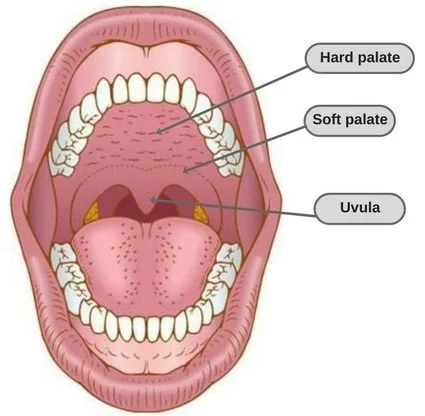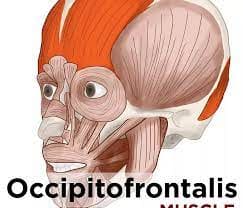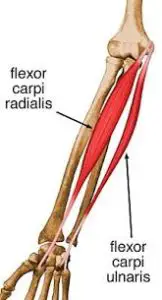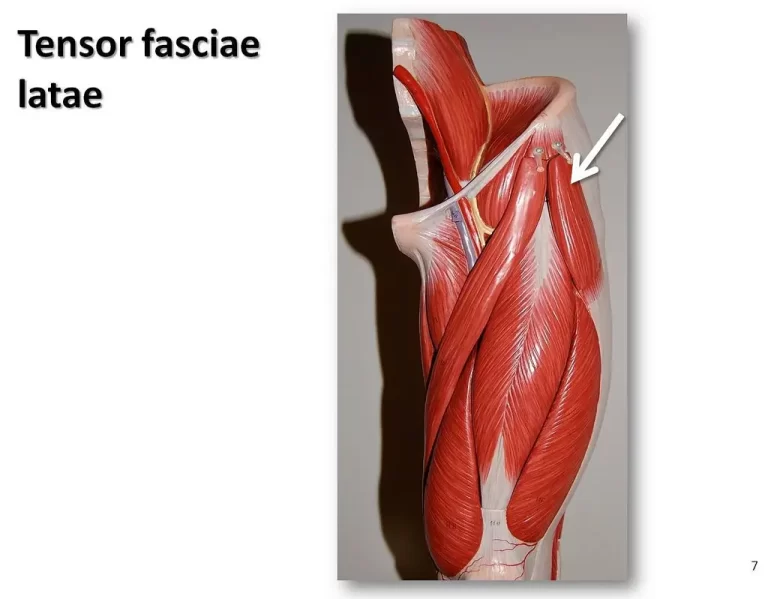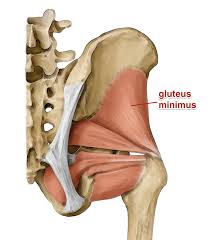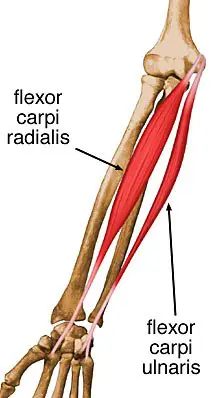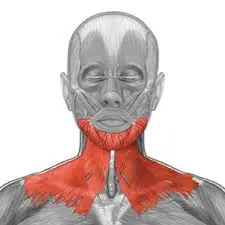Palatine Uvula Muscle
Palatine Uvula Muscle Anatomy
The muscular part of the uvula shortens and broadens the uvula. This changes the contour of the posterior part of the soft palate. This change in contour allows the soft palate to the posterior pharyngeal wall to help close the nasopharynx during swallowing.
It is supplied by the pharyngeal branch of the vagus nerve.
a conic projection from the posterior edge of the middle of the soft palate, composed of connective tissue containing a number of racemose glands, and some muscular fibers (musculus uvulae). It also contains a large number of serous glands that produce a lot of thin saliva.
Origin:
hard palate.
Insertion:
Palatine aponeurosis.
Nerve supply:
pharyngeal plexus.
Action:
Moves and changes the shape of the uvula
Clinical Importance
Inflammation
Sometimes the uvula enlarges three to five times its normal size due to swelling of the mucous membrane surrounding it. It is referred to as uvulitis. Even when there is nothing foreign in the throat or tongue, the uvula can nevertheless elicit symptoms similar to choking or gagging. This may result in difficulties speaking, breathing, and eating.
Many explanations exist for why the uvula swells, such as dehydration (from dry weather, for example), heavy smoking or other inhaled irritants, snoring, allergic reaction, or bacterial or viral infection. In addition, soreness and swelling may result from an aphthous ulcer that has developed on the uvula.
Drinking liquids can help if dehydration is the source of the swelling. Gargling with salt water could be beneficial if a bacterial infection is the cause. It may, nevertheless, potentially indicate other issues. Some individuals who have a history of recurrent uvulitis carry an autoinjector filled with epinephrine to treat attack symptoms. Usually not life-threatening, an enlarged uvula goes away quickly—usually within a day.
Snoring and sleep apnea
An extended uvula can produce vibrations that result in snoring, which is another way that the uvula can contribute to snoring or heavy breathing as you sleep. Sometimes this results in sleep apnea, which can be addressed with an operation called uvulopalatopharyngoplasty (UPPP, or UP3), which involves removing the uvula entirely or in part. However, if scar tissue develops and the velopharynx’s airspace is reduced, this procedure may potentially result in sleep apnea.
Although the effectiveness of UPPP as a sleep apnea treatment is unknown, some study has indicated that it can reduce symptoms by 40–60%. Apnea usually goes away in the short term before returning in the medium to long term, and occasionally getting worse than it did before the UPPP.
Velopharyngeal insufficiency
Velopharyngeal insufficiency is a rare disorder where the uvula fails to shut adequately against the back of the throat in a tiny percentage of individuals. This results in “nasal” (or more accurately, “hyper-nasal”) speech, in which the speaker is unable to pronounce certain consonants, such as ‘b’ like’m, and excess air is forced down their nose.
Nasal regurgitation
The uvula and soft palate shift superiorly during swallowing to seal the nasopharynx and stop food from entering the nasal cavity. Nasal regurgitation is the outcome when this process is unsuccessful. It is prevalent in patients with neuromuscular illness, myositides, and VPI. This type of regurgitation of fluids can also happen when a large amount of liquid is regurgitated or when coughing vigorously, which could be the result of inadvertently inhaling water. Liquid may be ejected back through the nose when coughing prevents the uvula from obstructing the nasopharynx.
Society and culture
A traditional healer will ritely remove the uvula, or a portion of it, in several parts of Africa, such as Somalia, Ethiopia, and Eritrea.
The uvula could be considerably shorter in this situation. It is not considered to be a factor in velopharyngeal insufficiency, unless the tonsils have also been removed.

